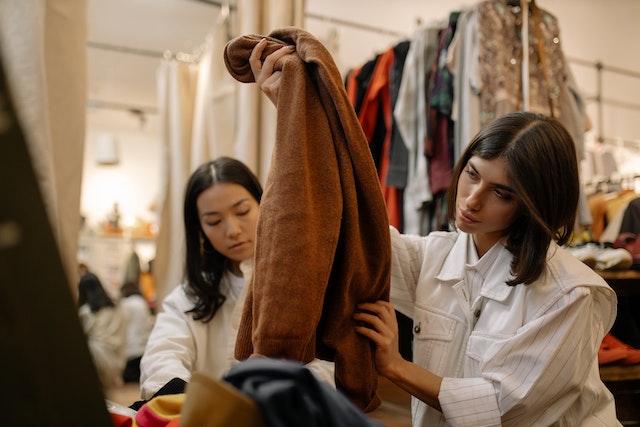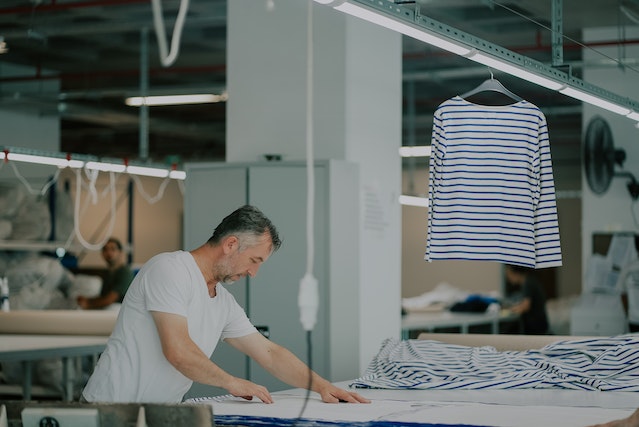
In recent years, the fashion industry has come under scrutiny for its negative impact on the environment. From the use of water resources and pesticides to the accumulation of textile waste, the fashion industry is a major contributor to environmental problems such as climate change and pollution throughout its long history. However, there is a growing movement towards sustainable fashion – a shift towards more responsible and environmentally conscious practices in design, production, and consumption of fashion.
Sustainable fashion encompasses a wide range of practices, from the use of eco-friendly materials, observing social responsibility and implementing ethical labor practices to reducing waste and promoting recycling. As fashion forecasts continue to evolve, more designers and brands are embracing sustainable practices, and consumers are increasingly seeking out eco-friendly options.
Principles of Sustainable Fashion
Sustainable fashion is founded on a set of principles that guide designers and brands towards more responsible and environmentally conscious practices. More than just initiating the latest trends, more designers are looking into environmentally conscious fashion, providing a framework for creating products that are not only beautiful and stylish but also ethical and eco-friendly.
Reduction of waste and recycling initiatives

One of the key principles of sustainable fashion is the reduction of waste. This means creating products that are designed to last, using materials that are recyclable or biodegradable, and implementing take-back programs that allow customers to return worn or unwanted clothes to be repurposed or recycled. Designers and brands are also looking at innovative ways to reduce textile waste, such as upcycling or using scraps to create new products.
Use of eco-friendly materials
In a bid to counter the devastating effects of fast fashion, proponents of sustainable fashion are the use of eco-friendly materials and alternatives to conventional fabrics. This means using materials that are sustainable, non-toxic, and have a minimal impact on the environment. Designers may use organic cotton, bamboo, or hemp instead of conventional cotton, which requires large amounts of water, pesticides, and fertilizers.
Some designers are using recycled plastic bottles to create high-quality fabric, while others are experimenting with biodegradable materials such as mushroom mycelium. They may also use recycled materials, such as plastic bottles or fishing nets, to create new fabrics. These materials not only reduce waste but also offer unique textures and designs that can set sustainable fashion apart from mainstream fashion.
Promotion of ethical and fair trade practices
Sustainable fashion also promotes ethical and fair trade practices, ensuring that workers are paid fair wages, work in safe conditions, and have their rights respected. This means sourcing materials from suppliers that meet ethical standards, such as the Fairtrade certification, and ensuring that workers are not exploited in the production process. Brands that prioritize ethical labor practices also build trust and loyalty with customers, who increasingly want to know the story behind the clothes they wear.
Adoption of circular economy and extended producer responsibility
Sustainable fashion is also adopting the principles of the circular economy and extended producer responsibility. This means designing products that can be reused or repurposed, and taking responsibility for the entire lifecycle of a product, from production to disposal.

Brands are increasingly looking at ways to design products that can be easily disassembled and recycled, and to reduce the amount of waste generated in the production process.
Innovations in Sustainable Fashion
One of the most exciting aspects of sustainable fashion is the creative innovation happening within the industry. Designers are pushing the boundaries of what is possible with eco-friendly materials and ethical manufacturing practices. Here are some examples of innovations in sustainable fashion:
Development of sustainable and innovative textile
Designers are experimenting with unconventional materials to create new types of sustainable textiles. Some are using materials like pineapple leaves, cactus, and even mushrooms to create unique and eco-friendly fabrics. Others are using recycled materials such as plastic bottles and fishing nets to create new textiles. Furthermore, they are also creating innovative fibers, such as Tencel and Modal, which are made from renewable materials and can be recycled infinitely.
Implementation of advanced manufacturing techniques
Sustainable fashion also involves the implementation of advanced manufacturing techniques that reduce waste and carbon emissions. For example, 3D printing can create intricate designs without generating fabric waste, while digital printing can reduce water usage and chemical waste during the printing process. Additionally, local and on-demand manufacturing, which reduces shipping and storage costs, is becoming increasingly popular.
Integration of technology for sustainable fashion solutions
Technology is playing an important role in creating eco-friendly fashion solutions. For example, some companies are developing apps that allow customers to track the environmental impact of their clothing choices, making it easier to shop responsibly. Others are using blockchain technology to track supply chains and ensure ethical labor practices.
Collaborations and partnerships for sustainable initiatives
Collaborations and partnerships are essential for driving sustainable fashion forward. Brands are teaming up with sustainable materials suppliers and manufacturers to create eco-friendly products that are also fashionable.

Fashion schools are also collaborating with industry partners to develop sustainable design curricula and offer resources for sustainable design practices.
Eco-friendly fashion is not only good for the environment but also for the economy. As demand for eco-friendly options grows, so does the market for sustainable fashion. This provides an opportunity for small, independent designers who prioritize sustainability in their practice to stand out and make a difference.
Overall, sustainable fashion is a growing movement that is changing the fashion industry for the better. With innovation and collaboration, sustainable fashion can make a significant impact on the planet while still producing stylish and high-quality clothing.
